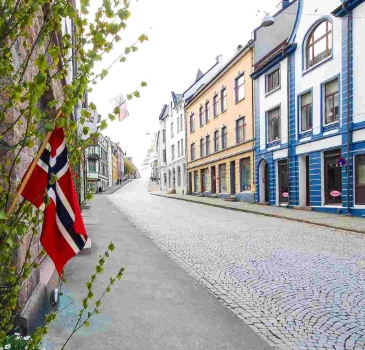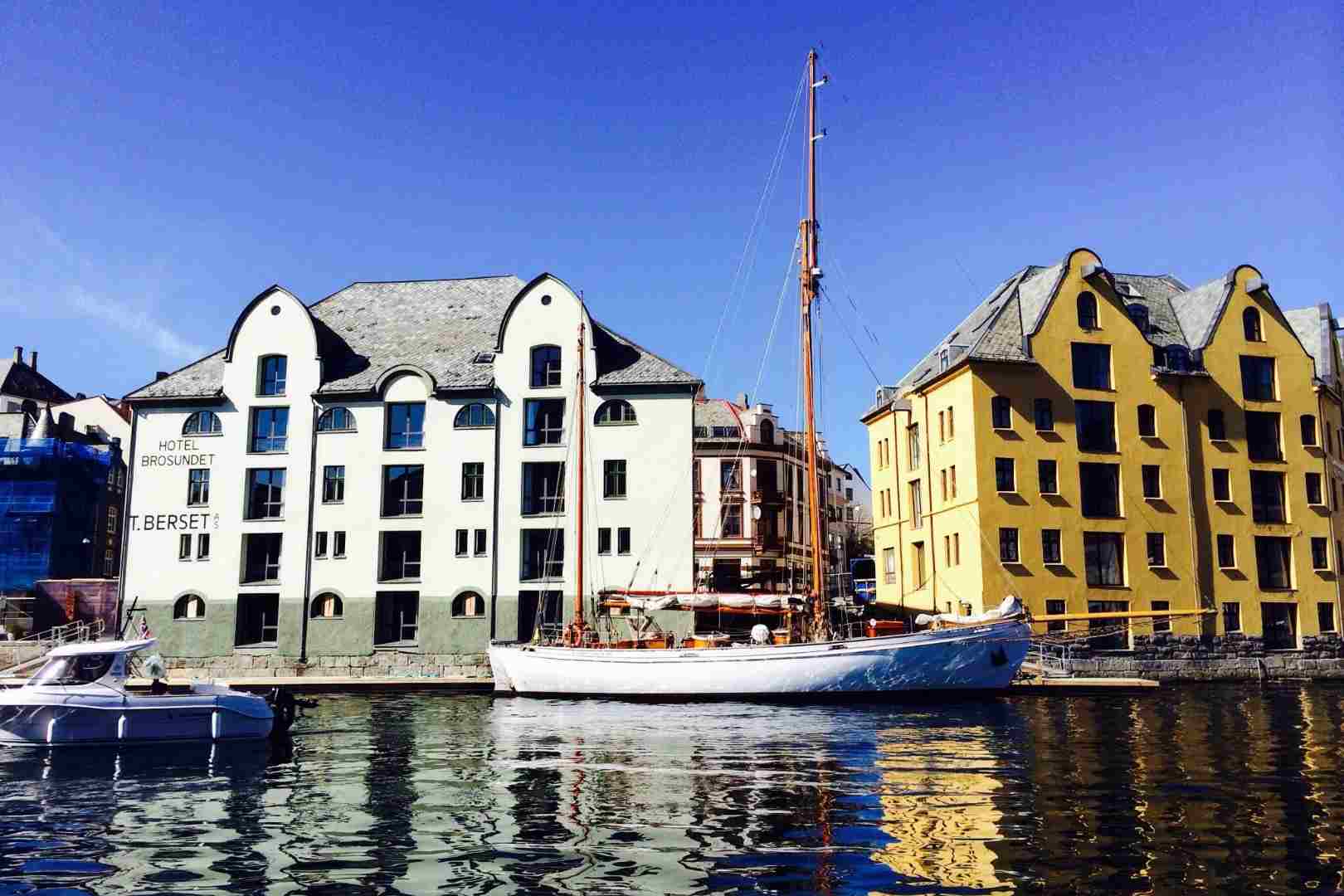Ålesund, a picturesque city nestled among Norway’s western fjords, is celebrated worldwide for its distinctive architectural identity, a unique style that emerged from a tragic event: the devastating city fire of 1904. To truly appreciate Ålesund, one must first understand its place within the vast, transformative global artistic current known as Art Nouveau, a movement that flourished across Europe between approximately 1890 and 1914. This style, known locally in Scandinavia and Germany as Jugendstil, was a profound reaction against the rigid academic art and historicism of the previous century, seeking a “new art” that reflected the modernity and free spirit of a rising new era. The Art Nouveau movement, though international in scope and fueled by economic prosperity and the swift circulation of new ideas, was never uniform; it adopted distinct regional names and characteristics, such as Secession in Vienna and Modernismo in Spain. Ålesund, far removed from the continental metropolises, became an astonishing, pure expression of this style, a concentration of Jugendstil architecture virtually unmatched anywhere else in the world, offering a complete, cohesive architectural statement that cities built incrementally over decades simply cannot rival.
The genesis of this architectural marvel is rooted in tragedy. In the early hours of January 23, 1904, a massive fire erupted in the heart of the city, sweeping through the densely packed wooden buildings that comprised the center. Fanned by a terrifying winter storm, the blaze raged for a relentless sixteen hours, consuming over 850 houses and leaving more than 10,000 people homeless in the harsh depths of the Norwegian winter. The sheer scale of the destruction meant that almost the entire city center had to be cleared, leaving a literal blank canvas presented to the architectural world—an opportunity unprecedented in size and scope. This calamity, however, presented a colossal opportunity for urban renewal and experimentation, setting the stage for Ålesund’s unique character and its eventual designation as a living, outdoor architectural museum. Learning the history of Ålesund’s robust fishing and maritime industries often intertwines with tales of this past resilience, as the community rallied to rebuild the economic engine that sustained them.
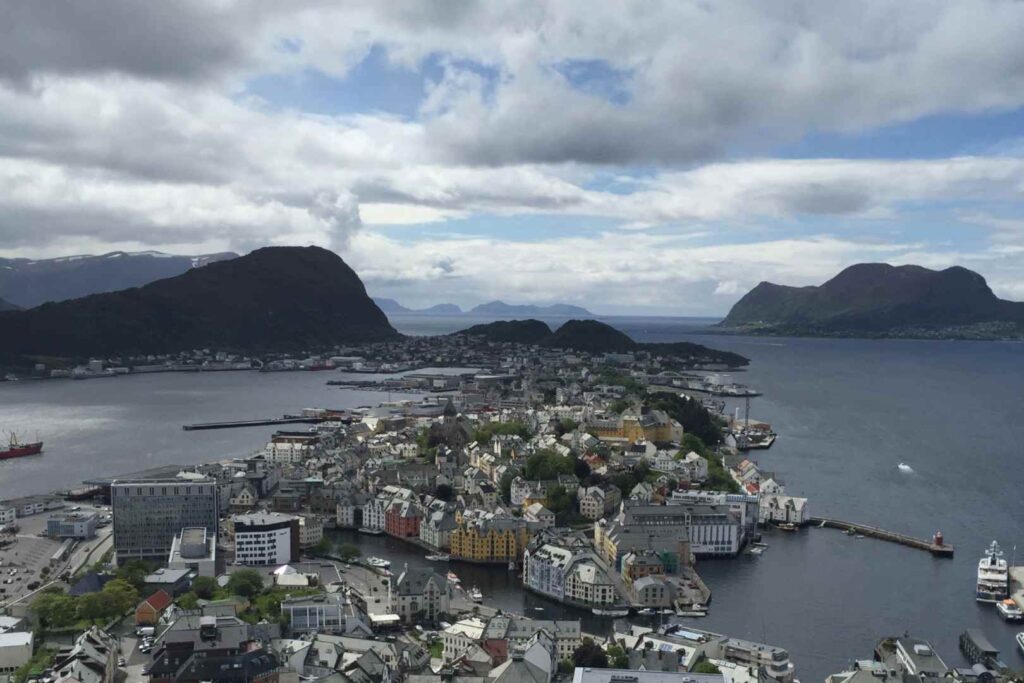


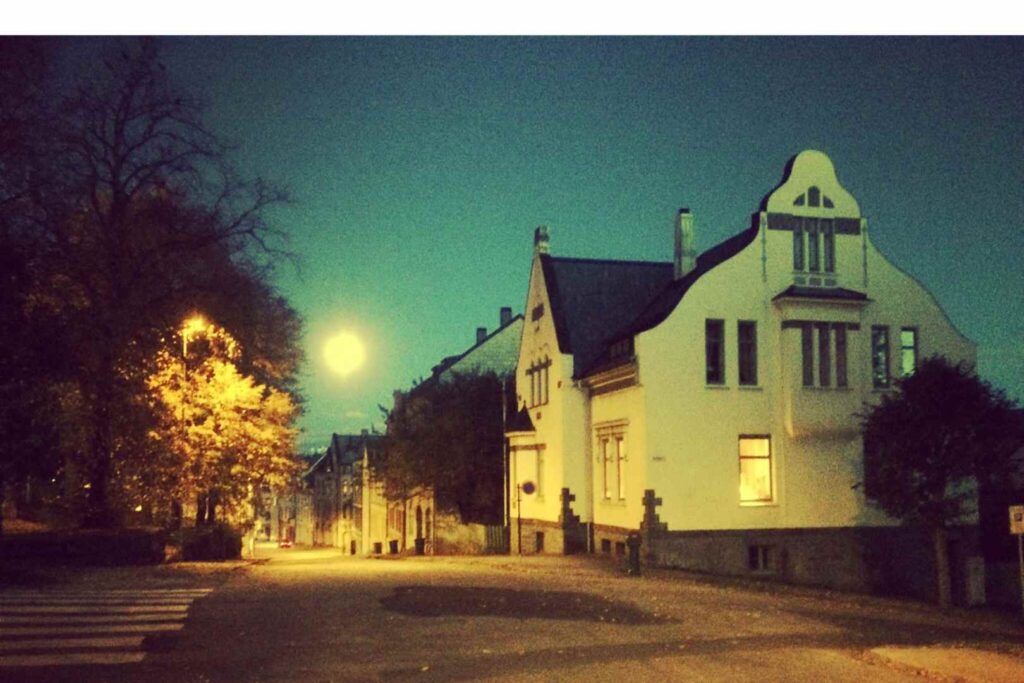

Following the fire, support poured in from across Europe, significantly influenced by the personal affinity of German Emperor Wilhelm II for the region, who swiftly dispatched ships laden with aid, food, and crucial building materials. This direct European connection, combined with the reigning architectural trend of the moment—Jugendstil—led to its swift and cohesive adoption for the city’s rebirth. Architects from all over Norway and the continent, many freshly educated abroad in the new styles, flocked to Ålesund, bringing with them visions inspired by the dynamic European architectural schools. They were united by the core mission of Art Nouveau: to create a design that was truly appropriate to the modern age, breaking decisively with the decorative ties of the past. The result was a stunningly harmonious urban landscape where nearly every building, rebuilt with astonishing speed and mostly completed by 1907, became a unique expression of the style. The new building directive mandated the use of fire-resistant brick and concrete, replacing the flammable wood structures, essentially forcing the new city to be built in a more modern, durable, and architecturally distinct material, perfectly aligning with the spirit of modern design.
The foundation for the city’s architectural uniformity was the Art Nouveau movement’s precise timing; it was simply the dominant, fashionable style when the reconstruction began. The architects, often educated in the geometric aesthetics of German Jugendstil and Viennese Secessionists like Otto Wagner and Josef Hoffmann, adhered to the Art Nouveau ideal of the “total work of art” (Gesamtkunstwerk), subordinating the entire building to a single, uniform artistic and ornamental concept. This profound commitment to a consistent artistic concept, applied across an entire urban centre, is what makes Ålesund so unique, providing it with a rare, cosmopolitan flair usually reserved for the great capitals. As they worked, builders and owners constantly observed each other’s designs, leading to a vibrant, synergistic burst of creativity. While projects that allowed for higher expenses were adorned with richer, more complex decorations, even simpler facades maintained the distinctive features of the style, creating a remarkably high, consistent quality of design throughout the compact center.
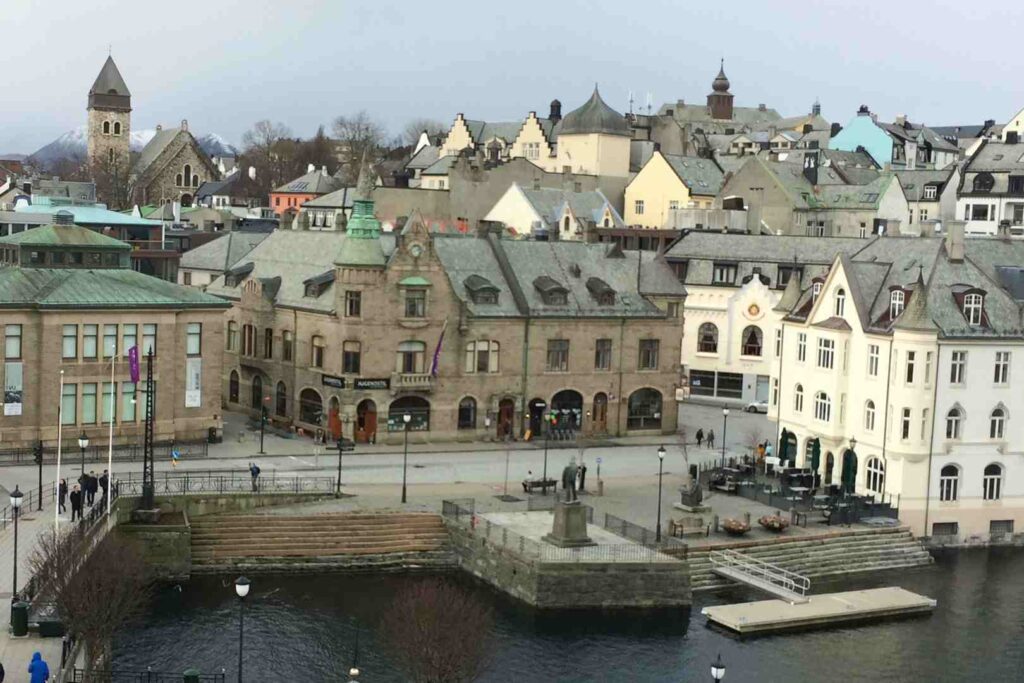



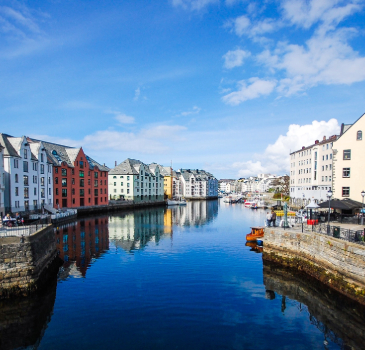

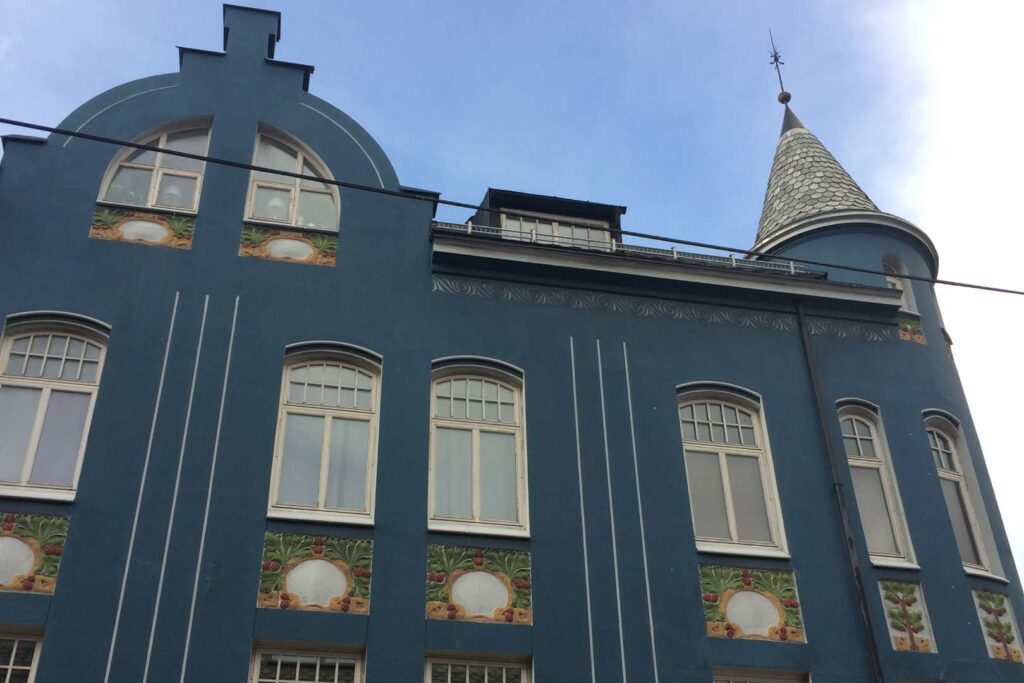

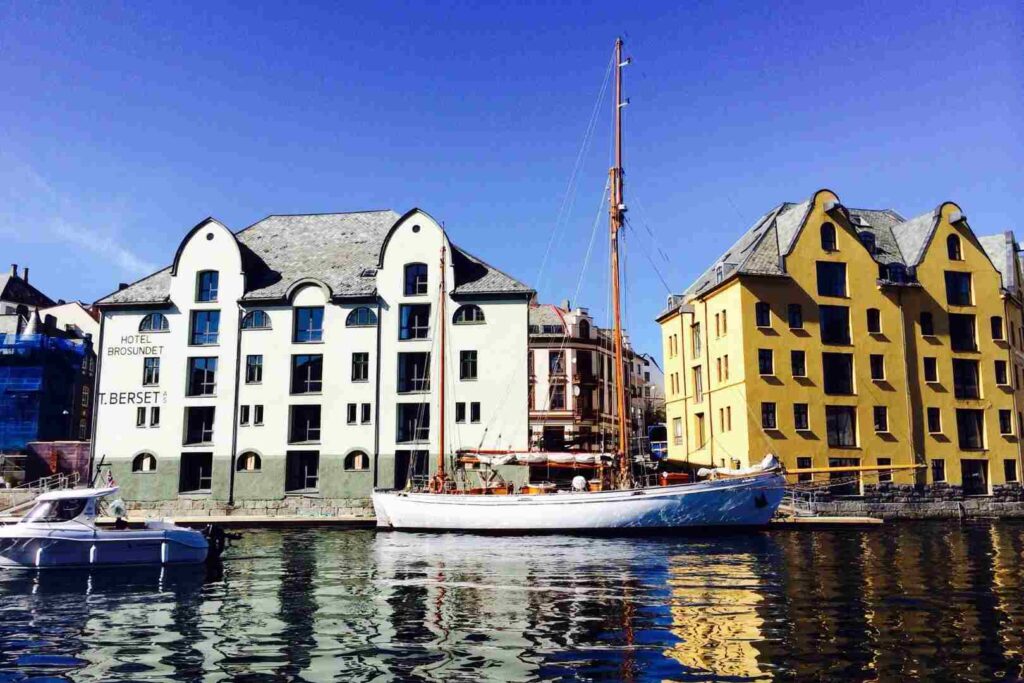

The architectural features you will observe in Ålesund are a rich blend of this international influence and local inspiration. Look for the intricate turrets, towering spires, and ornamental gargoyles that crown the buildings, creating a dramatically uneven and dynamic skyline. The ornamentation, drawing heavily on the universal Art Nouveau vocabulary, features complex, organic, and naturalistic motifs, but with a distinctly Scandinavian twist: stylized flowers, leaves, and animal figures, sometimes drawing on pre-historic or medieval Norse motifs, are integrated directly into the stone or stucco work, giving the buildings a whimsical, yet deeply rooted, fairy-tale quality. The characteristic asymmetrical designs, often punctuated by projecting bays, rounded corners, and towers, add significant visual dynamism to the compact streetscapes. You will also spot the distinctive craftsmanship of the era in the meticulous use of decorative stained glass, often featuring vegetal and floral motifs, and the flowing ironwork on balconies. This deep commitment to ornamental vocabulary and cohesive design elevates the entire city into a veritable “outdoor architectural museum” of unparalleled quality. The sheer density of Art Nouveau buildings, all constructed within a span of three years, grants the city a powerful, recognizable, and highly aesthetic identity—it is a snapshot of an international architectural movement frozen in a perfect, cohesive ensemble, a monument to the resilience of the human spirit.
Today, you can experience this extraordinary past simply by walking through the compact center, which is the finest way to immerse yourself in the Jugendstil heritage. Start your exploration at the picturesque Brosundet Canal, where the buildings appear to rise directly from the water, often reflecting their colourful, ornate facades in the glassy surface—a truly enchanting sight, reminiscent of a northern Venice. Continue along to historic streets like Kongens Gate and past the former fishing warehouses at Molovegen, which, though beautifully converted into modern spaces, still retain the vibrant maritime spirit that built the city’s wealth. To fully appreciate the story behind the stone, a visit to the Jugendstilsenteret (Art Nouveau Centre) is essential. Housed in the perfectly preserved former Swan Pharmacy, this national centre offers an immersive journey with authentic interiors, furniture, and interactive displays that recount the exact story of the fire, the architectural plans, and the philosophy behind the rebuilding. No visit is complete without making the challenging, yet immensely rewarding, climb up the 418 steps to the Aksla Viewpoint (or Fjellstua), from which you are granted a breathtaking, panoramic view of the entire city’s architectural uniformity set against the stunning backdrop of islands, the surrounding archipelago, and the majestic Sunnmøre Alps and fjords. This single vista profoundly illustrates how a civic tragedy ultimately led to the creation of Norway’s most uniquely beautiful city, a cultural and nature journey unlike any other in Europe. The sheer density of this world-class architectural environment, seamlessly blending urban charm with dramatic Norwegian nature, makes Ålesund a destination that cannot be fully appreciated on a self-guided stroll, especially when considering the complex historical and artistic layers of the Jugendstil movement and the unique local stories behind each building’s facade.
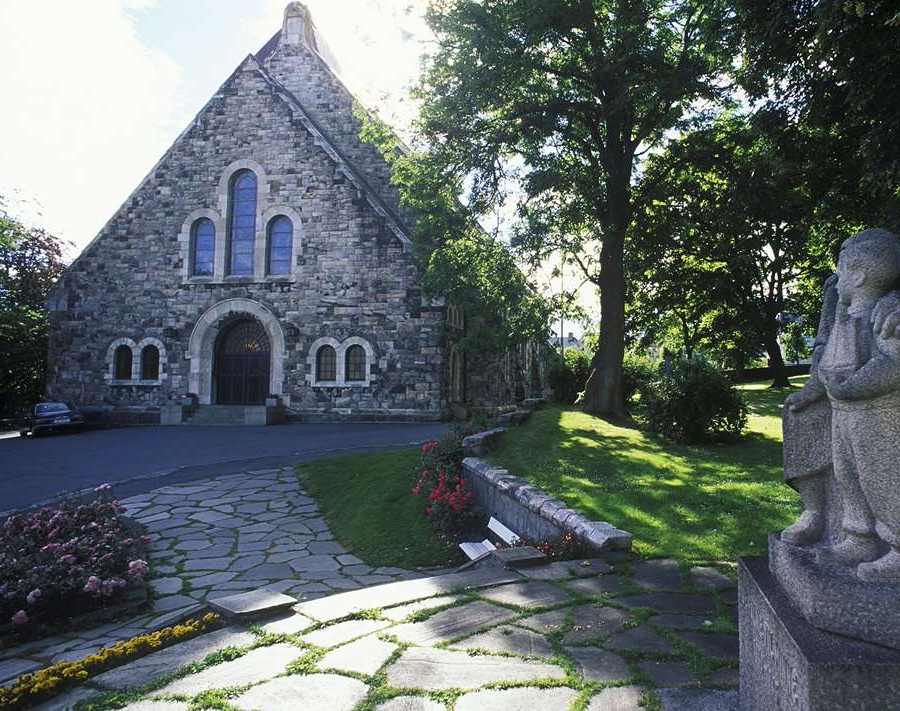

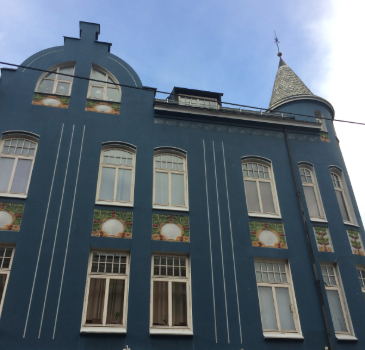

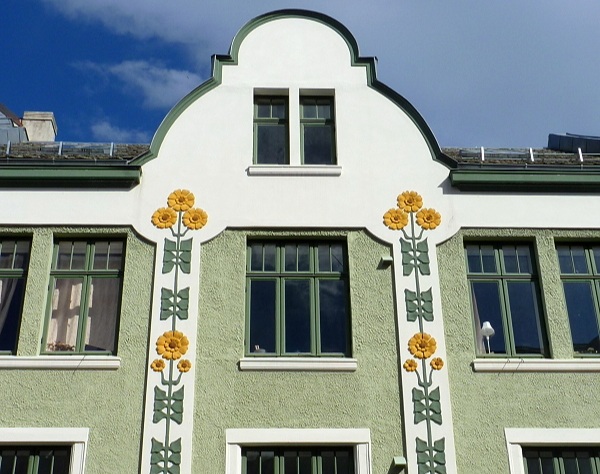

To truly unlock the meaning behind the spires, understand the complex symbolism in the facades, and learn the captivating stories of the architects who rebuilt this modern city from the ashes, the very best thing you can do is secure the services of a local expert. For an unparalleled, in-depth, and personalized understanding of Ålesund’s Art Nouveau magic and its cultural significance, we highly recommend booking our full-day private tour which offers a comprehensive, 8-hour exploration. However, we understand that travelers have varied schedules and interests, which is why we also offer a focused half-day (4-hour) and a short (2-hour) private tour option. You can choose the experience that best suits your travel plans and preferred pace. Don’t just see the Art Nouveau; understand it, live it, and let our expert guide you through the details you would otherwise miss. To reserve your preferred tour or to ask any questions about customizing your visit, please contact us directly using the form on our page HERE.



